Author: Mike Neville
As is the case with all chemicals, the temperature at which beer is stored will impact the rate certain reactions occur, with warmer environments accelerating the aging process. For this reason, brewers often make a concerted effort to keep their beer cold once packaged with the hope of prolonging shelf-life.
While Big Beer has been packaging in cans since 1935, craft brewers have historically relied primarily on bottles, the caps of which are a noted vector for oxygen ingress. However, over the last decade, many craft breweries have shifted to packaging in cans, which have the benefits of being completely sealed and impermeable to light. Still, who hasn’t walked into a beer store to see row after row of bottles and cans sitting next to each other on warm shelves? What impact is this having on those beers?
I bought a Cannular Bench Top Seamer a couple years ago, as I far prefer storing and shipping beer in cans rather than bottles. While perusing past xBmts on storage temperature, I realized we’d yet to do one on canned beer and decided to test it out for myself!
| PURPOSE |
To evaluate the differences between a canned Kölsch stored cool and one stored warm.
| METHODS |
Hoping not to hide any impact of storage temperature, I went with my standard Kölsch recipe for this xBmt.
Shiftbier
Recipe Details
| Batch Size | Boil Time | IBU | SRM | Est. OG | Est. FG | ABV |
|---|---|---|---|---|---|---|
| 5.5 gal | 60 min | 21.1 | 3.7 SRM | 1.052 | 1.006 | 6.04 % |
| Actuals | 1.052 | 1.006 | 6.04 % | |||
Fermentables
| Name | Amount | % |
|---|---|---|
| Pale Malt 2-Row | 5 lbs | 45.45 |
| Pilsner 2-Row | 5 lbs | 45.45 |
| Vienna Malt | 1 lbs | 9.09 |
Hops
| Name | Amount | Time | Use | Form | Alpha % |
|---|---|---|---|---|---|
| Triumph | 11 g | 60 min | Boil | Pellet | 10.7 |
| Kazbek | 28 g | 20 min | Boil | Pellet | 4.3 |
Yeast
| Name | Lab | Attenuation | Temperature |
|---|---|---|---|
| SafAle German Ale (K-97) | Fermentis | 81% | 32°F - 32°F |
Notes
| Water Profile: Ca 50 | Mg 7 | Na 5 | SO4 26 | Cl 50 |
Download
| Download this recipe's BeerXML file |
After collecting the water for a single 10 gallon batch, I weighed out and milled the grain.
With the water properly heated, I incorporated the grains then checked to make sure the mash was at my target temperature.
During the mash rest, I prepared the kettle hop additions.
Once the 60 minute mash was finished, I removed the grains then boiled the wort for 60 minutes, adding hops at the times listed in the recipe.
When the boil was complete, I quickly chilled the wort.
Next, I transferred the wort to a sanitized fermenter.
A refractometer reading showed the wort was at my target OG.
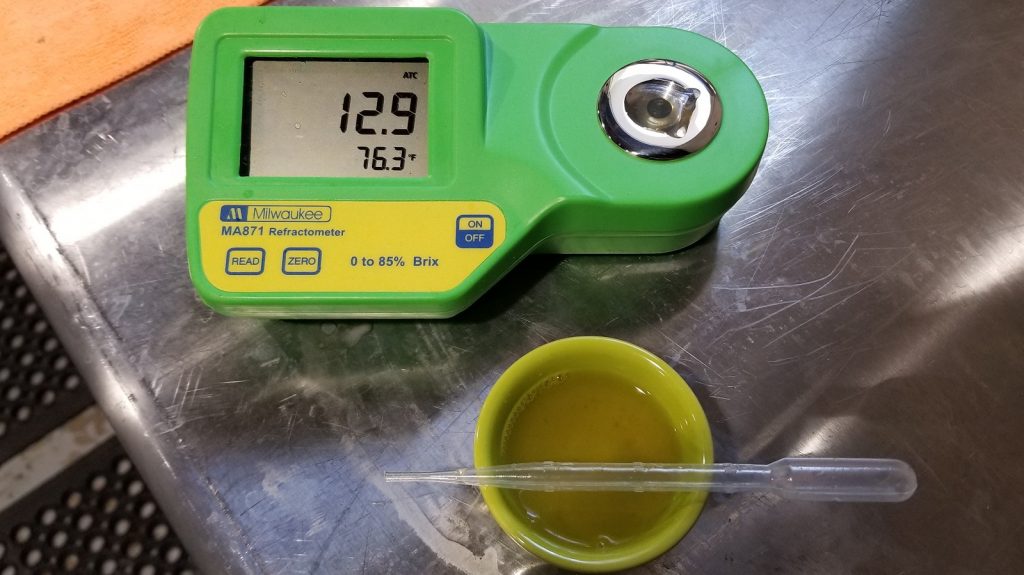
The fermenters were connected to my glycol unit and allowed to finish chilling to my desired fermentation temperature of 63°F/17°C, at which point I pitched 2 packs of Safale K-97 yeast. The beer was left to ferment for 11 days before I took a hydrometer measurement showing it had reached 1.006 FG.
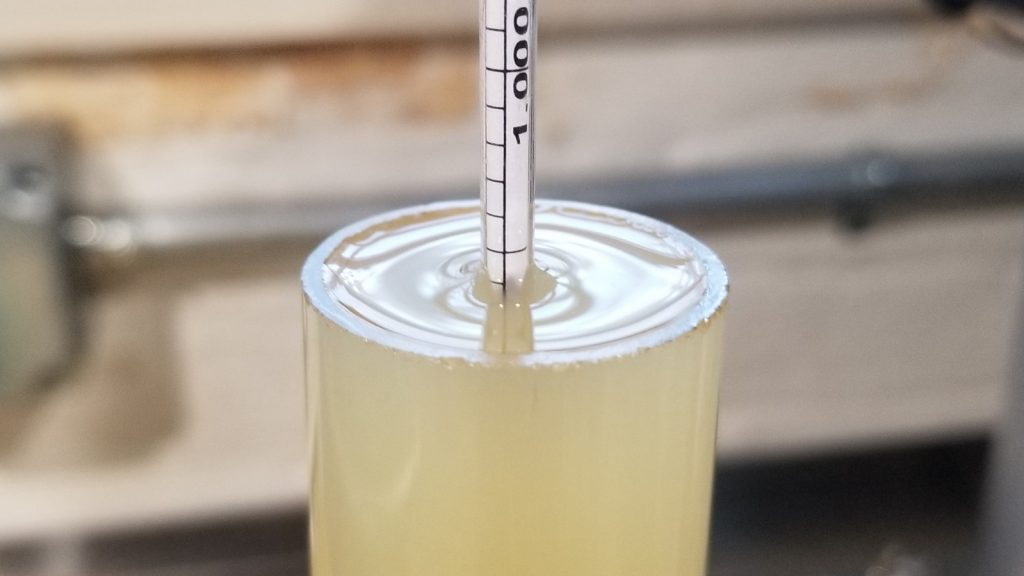
At this point, I cold-crashed the beer to 38°F/3°C and returned 24 hours later to pressure transfer it to a CO2 purged keg.
The filled kegs were placed in my keezer and burst carbonated overnight before I reduced the gas to serving pressure. After 2 weeks of conditioning, I proceeded with canning the beer.
While some of the cans were placed in my 34°F/1°C fridge, the others were placed on top of my fridge, which maintains a temperature around 78°F/26°C. After 8 weeks, the warm stored cans were moved to the fridge to chill before the beers were ready for evaluation.
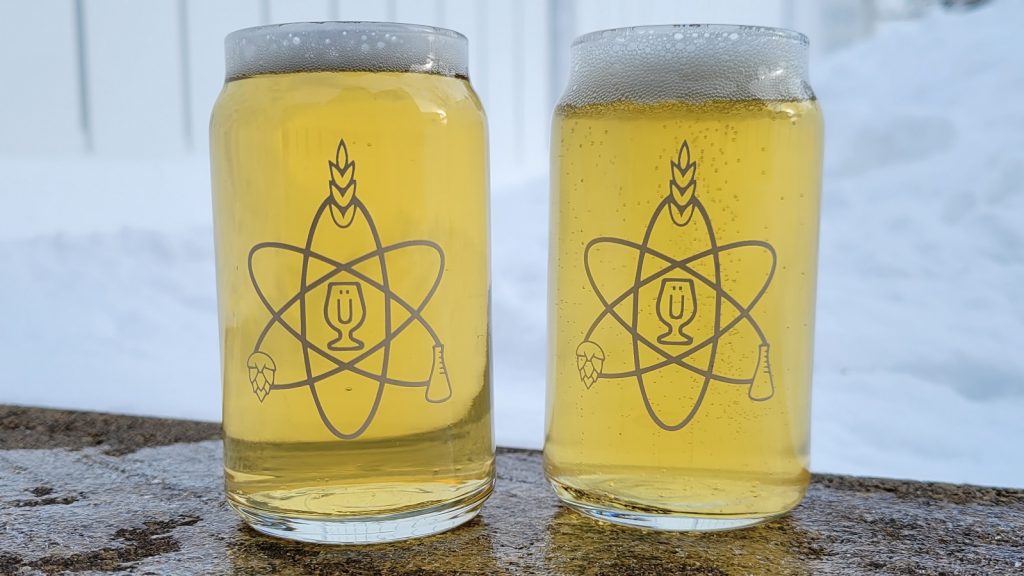
| RESULTS |
A total of 21 people of varying levels of experience participated in this xBmt. Each participant was served 2 samples of the beer stored cool and 1 sample of the beer stored warm in different colored opaque cups then asked to identify the unique sample. While 12 tasters (p<0.05) would have had to accurately identify the unique sample in order to reach statistical significance, only 10 did (p=0.12), indicating participants in this xBmt were unable to reliably distinguish a canned Kölsch stored at 34°F/1°C for 8 weeks from one stored at 78°F/26°C for the same amount of time.
My Impressions: Out of the 5 semi-blind triangle tests I attempted, I correctly identified the odd-beer-out 4 times. While I perceived both beers as having the same cracker and doughy malt character, the warm stored version seemed to have slightly more carbonation to me, which is all I relied on to tell them apart.
| DISCUSSION |
With the established fact that warmer temperatures hasten chemical reactions, which in the case of beer is typically a negative thing, brewers tend to prefer keeping their packaged product as cool as possible to extend freshness. The impact of both age and storage temperature can also be minimized by the type of package, with many modern brewers favoring cans due to their impermeability to both oxygen and light. Interestingly, tasters in this xBmt were unable to reliably distinguish a canned Kölsch stored at 34°F/1°C for 8 weeks from one stored at 78°F/26°C for the same amount of time.
One plausible explanation for these results is that Kölsch simply isn’t as prone to the negative reactions of warm storage as more notably sensitive styles, such as Hazy IPA. However, considering the significant results from past xBmts on this variable, it may also be that storage in cans helped to mitigate the staling effects associated with storing beer warm. Finally, understanding that oxidation is a major culprit of beer staling, my effort to minimize oxygen exposure at all points during the cold-side process may have played a role as well.
Predictably, there will be those confounded by these results who feel I should have waited longer than 8 weeks before having them evaluated, and while it’s entirely possible any differences would have become more apparent after a year or 10, my goal was to test a more reasonable scenario. These results only served to validate my approach of storing canned beer as cool as possible, so I won’t be making any changes. I certainly look forward to repeating this xBmt with a Hazy IPA in the future.
If you have any thoughts about this xBmt, please do not hesitate to share in the comments section below!
Support Brülosophy In Style!
All designs are available in various colors and sizes on Amazon!
Follow Brülosophy on:
FACEBOOK | TWITTER | INSTAGRAM
If you enjoy this stuff and feel compelled to support Brulosophy.com, please check out the Support page for details on how you can very easily do so. Thanks!


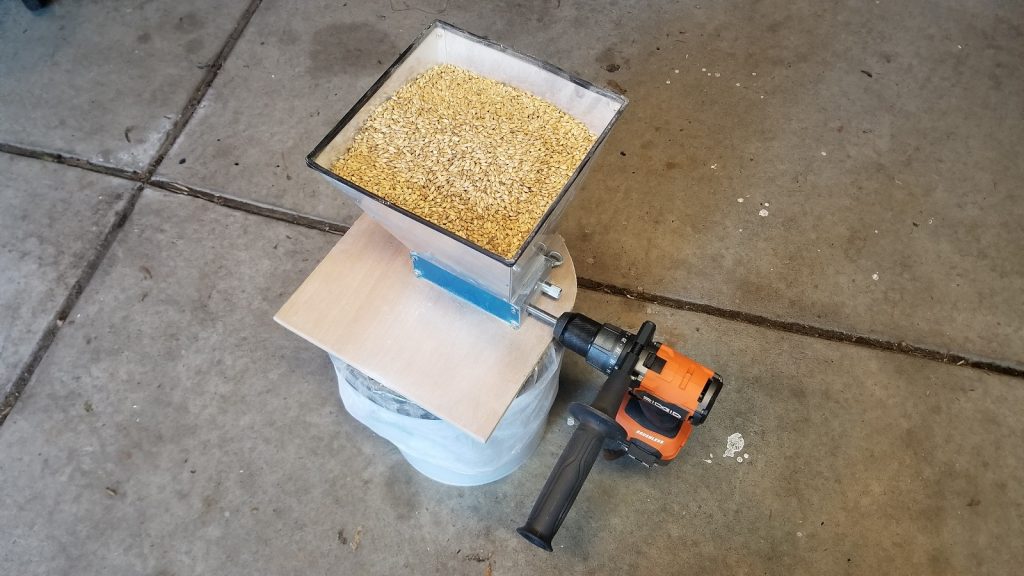

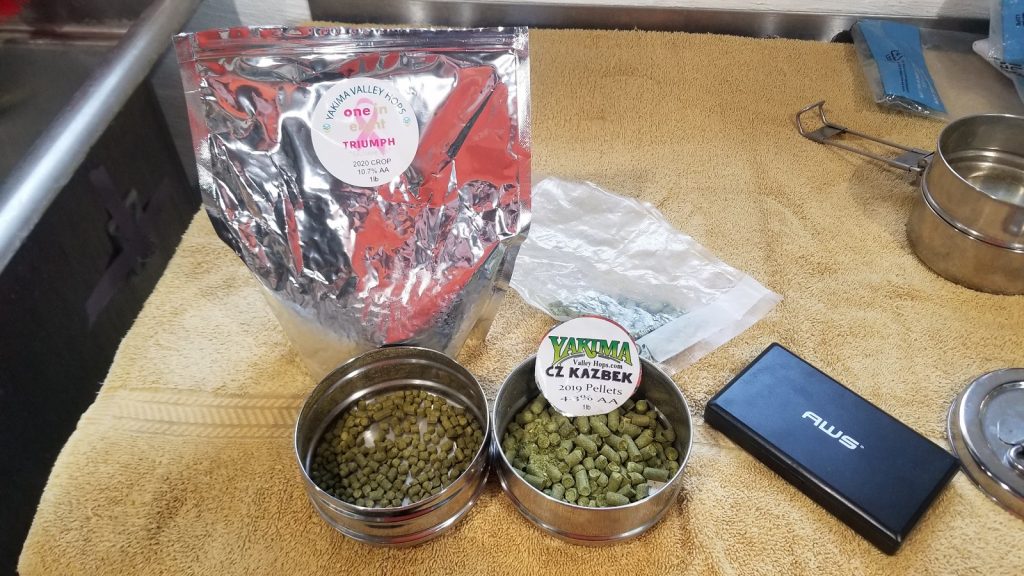
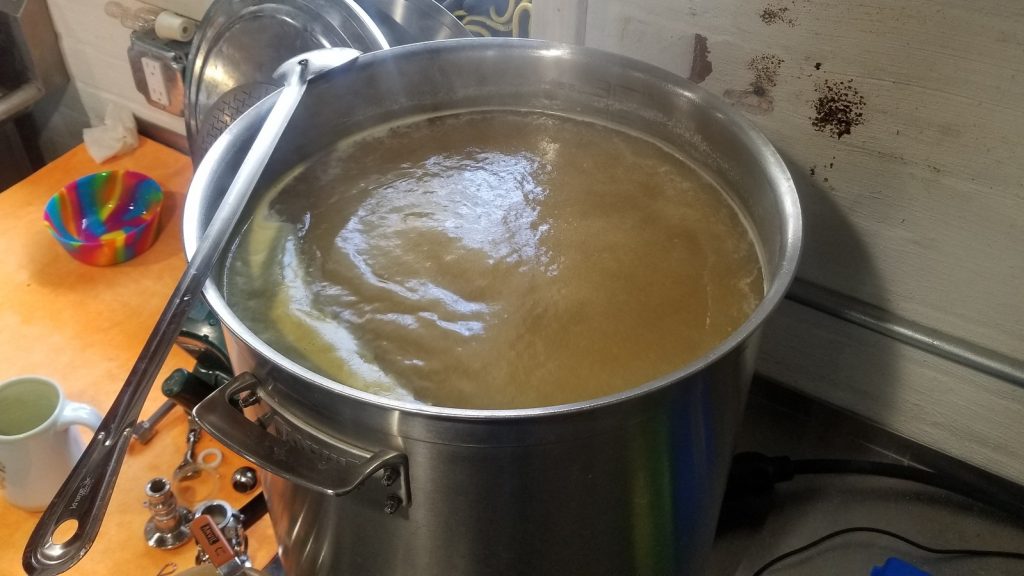

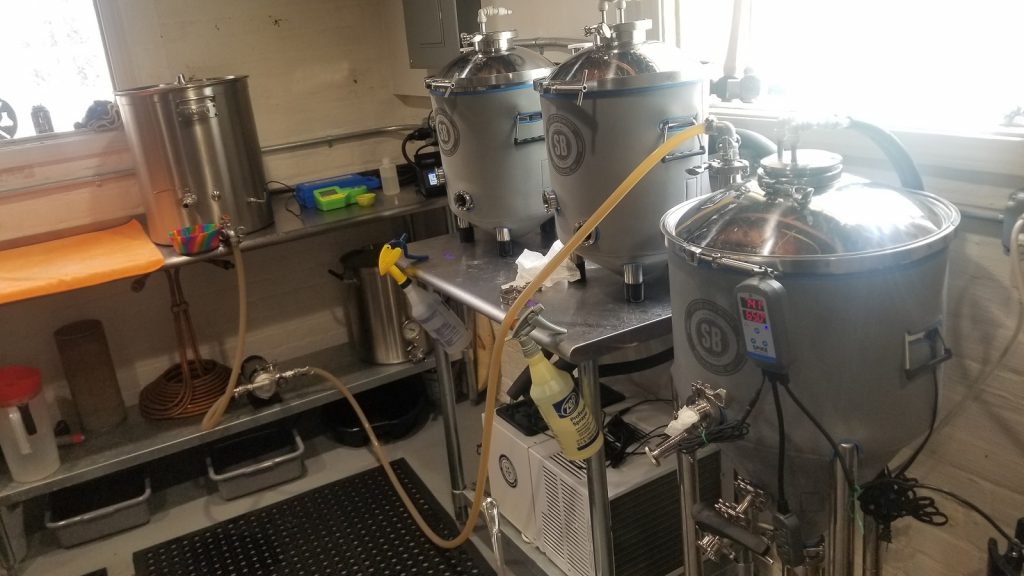

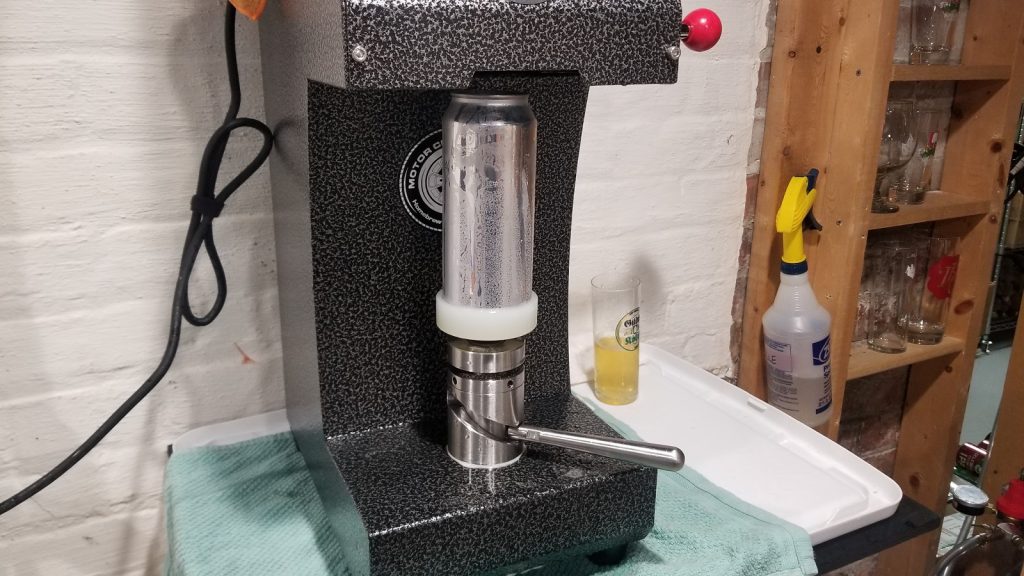











9 thoughts on “exBEERiment | Impact Storage Temperature Has On A Canned Kölsch”
How many hours did you store the warm kept beer in the fridge before serving it?
I stuck them in the fridge two days before serving
So it would seem that the yeast had still enough sugars to ferment in the warm beer. Not so much that it would turn into a gusher, but enough that you could taste the difference in carbonation.
Yeah, it was interesting, the warm stored cans were super hard before being added to the fridge
As long as temps remain somewhat stable, I never much worry about storing my beer. I have had the same experience as Mike – warmer tends to create a slightly higher carbonation.
<<>>
I don’t understand this statement.
How do these results validate your current approach? Didn’t your results show no difference in storage temperature for canned beer? How does that validate your current approach? I’m missing something.
Basically, since tasters couldn’t tell a difference, I won’t be making any changes to what I currently do.
Now that statement makes sense to me. Your method produces results no different than a warm storage method. Since the two methods give the same results, you are sticking with what you are already comfortable with. But that’s a very different statement than, “These results only served to validate my approach of storing canned beer as cool as possible, so I won’t be making any changes.” Small detail, but use of the term validation confused me.
That said, I loved the experiment. You advanced the knowledge of home brewing and that’s a good thing (and far more than I will accomplish today!). Keep up the good work.
Dave, I was wondering the same exact thing. These results do not validate the practice of storing beer as cool as possible– quite the opposite.